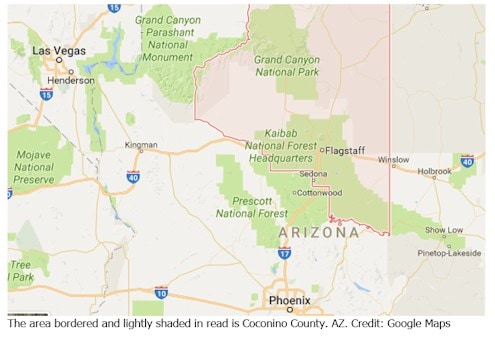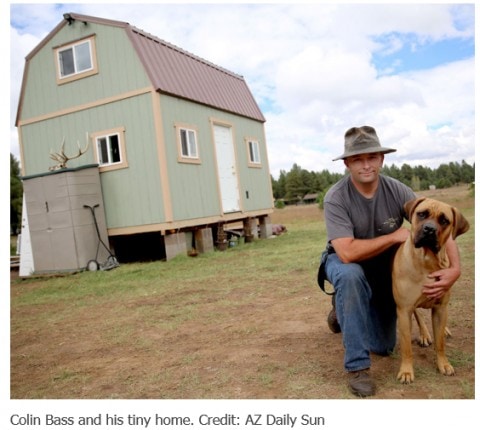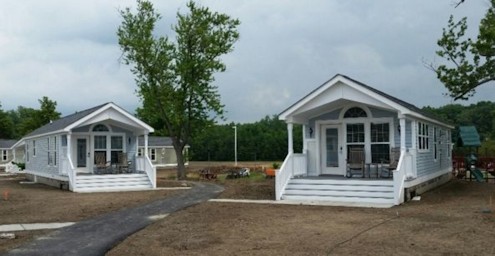
Amanda Acheson, Sustainable Building Program Manager for Coconino County, said she is contacted an average of once per day by someone either interested in building or buying a tiny house.

In response to that rising demand, the county is taking action.
The county is crafting a new internal policy that establishes building, zoning and wastewater requirements for tiny houses. The county expects to roll out a final version of the policy in October.
“The aim isn’t to layer on more regulation, but to create a system that makes it legal to have a tiny home in Coconino County,” said Acheson, to the AZDailySun.
“Tiny homes also align with the county’s development and housing goals, providing an avenue for more affordable and flexible housing that is also resource efficient and environmentally sustainable.”

County policy defines a tiny home as one that is 200 to 400 square feet and is built on site or on an approved trailer.
Draft language includes adjusted requirements related to minimum room dimension, ceiling height, lofts, ladders and electrical standards.
The language also defines where the houses can be located. Those built on an approved foundation or those built on trailers that have the suspension and axle components removed and are established on a permanent foundation will be permitted in all zones that allow detached single-family dwellings.
Tiny Houses and Manufactured Home Intersections…
Some in the manufactured housing industry ask, how many jurisdictions provide a similar level of acceptance to HUD Code manufactured homes, which are built to federally preemptive construction and safety standards?
As another Daily Business News look at this trend demonstrates, manufactured home producers – like giant Clayton Homes – are making efforts to tap into the tiny house movement. The video above, and the photo below, are examples of how manufactured housing operations are striving to connect to this trend.
Manufactured housing professionals from across the spectrum have strong views about related issues.
Brian Cira – president of Fairmont Homes, a division of AZ based Cavco Industries – stated in a related story, linked here, “Anybody with a brain in their head would look at a manufactured home.”
Cira elaborated by saying, “We do it much more efficiently, much more smartly. We’ve been doing this for decades.”
“Tiny houses have received favorable media attention in recent years. But not enough attention has been focused on the fact that many, if not most, are not built to a building code, with some jurisdictions raising safety concerns,” said M. Mark Weiss, an attorney who is president and CEO of the Manufactured Housing Association for Regulatory Reform (MHARR). Weiss’ comments were part of a report entitled Tiny House Owners Face Big Legal Trouble, linked here.

Back in Coconino County, AZ…
Tiny houses built on trailers when the running gear remains but are attached on an approved foundation are also allowed in zones that permit manufactured and pre-HUD Code mobile homes.
Tiny houses that are completely mobile are regulated by Arizona Department of Transportation (ADOT), and may be treated as recreational vehicles by the county.
Non-mobile tiny houses also will be allowed under the proposed rules as accessory dwellings units, which may be rented out.
This is exciting news for residents like Colin Bass. Bass has lived in his 200 square foot tiny home since 2015 and has made additions. He welcomes the new rules and shares why he chose tiny home living.
“I decided that we waste a lot, we waste trash, we waste space, we waste food. The only thing I could think to do is to be minimalist, to minimize my stamp,” Bass said.
According to Acheson, Albuquerque and Pima County are the closest areas that have codes in place for tiny homes. She mentioned that she drew some elements from those places in putting the county’s policy together.
“Before the county’s code was implemented, a tiny home would have to comply with the county’s regular building code. If it was built on a trailer, though, the county’s code doesn’t apply, so county staff would work on the project on a case-by-case basis,” Acheson said.
Bloomberg recently suggested that manufactured homes ought to rebrand as tiny houses, considering how much better the perception often is. MHProNews publisher L.A. ‘Tony’ Kovach observed that Bloomberg‘s intent was well meaning, but that the solution for manufactured housing requires a multi-pronged, sustained effort that could tap the other 99% of the housing market that new manufactured homes currently fail to reach. ##
(Image credits are as shown above.)

Submitted by RC Williams to the Daily Business News, MHProNews.
